10 Fascinating Velociraptor Facts You Need to Know!
Table of Contents
The Velociraptors are a well-known group of theropod dinosaurs which were slender, and known for their speed and agility. Their name means “swift thief,” and they lived during the late Cretaceous period. They had skulls that were slightly curved upwards and claw-like sickles on each of their second toes. They belong to the dromaeosaurid family.
Velociraptors are known for having very strong jaws which were filled with about 80 sharp teeth. A documentary featured in 2005 showed that Velociraptors did not use their claws to slice open the stomachs of their victims, as was previously believed. Instead, Velociraptors killed their prey with precision and aimed for the jugular vein or windpipe of the victim.
Velociraptor contained four claws on every foot. The first claw on every foot was small and was positioned away from the main foot. The second claw, placed in the innermost part of the foot, allowed the creature to become a capable hunter. The other two claws were used to support its weight.
Velociraptor Physical Characteristics
Velociraptor was a small dinosaur, standing at around 6 feet in length and 1.6 feet in height at the hip. It weighed around 15 kilograms, which is about the size of a modern-day turkey. One of the most distinctive physical characteristics of Velociraptor was the sickle-shaped claws on its second toes. These claws were around 2.5 inches long and were used to hold onto prey while Velociraptor delivered a fatal blow with its jaws.
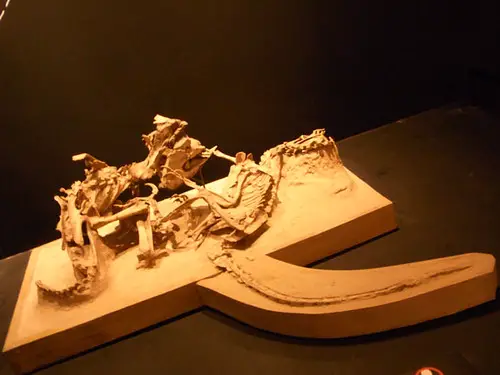
Velociraptor’s long, low skull was also a unique feature, with large eye sockets indicating that it had excellent vision. Its overall body shape was streamlined, with powerful hind legs designed for speed and agility. Its arms were relatively short, and the forelimbs had three-fingered hands with retractable claws.
Perhaps the most fascinating physical characteristic of Velociraptors was their feathers. Studies have shown that Velociraptor had feathers covering its body, which is one of the reasons why it is often depicted as having a bird-like appearance. These feathers were not used for flying but instead were most likely used for insulation, display, or to help with balance and maneuverability while hunting.
Dinosaur Data Sheet
- Velociraptor name
- Length 1.8 Mtrs.
- Height 2 Mtrs.
- Weight 60 Kg.
- Carnivorous Diet
- Superior Cretaceous Period
- 80 million years
- Found in Mongolia
How Fast is a Velociraptor?
The name Velociraptor is extracted from the Greek meaning ‘speedy thief.’ However, it wasn’t as quick as ‘bird mimic’ dinosaurs or the modern ornithomimids, which could reach speeds of up to 50 MPH. The truth is that even the speediest Velociraptors could have been significantly troubled by their turkey-sized, short legs and could have easily been outpaced by an athletic kid.
Raptors fossil has been discovered individually and not in clusters. The discoveries of more recent Deinonychus have been linked with that of Velociraptors, which indicates that they hunted in solitary. However, this doesn’t ascertain anything because perhaps the Deinonychus did so to fight a much bigger dinosaur as their size was more significant than that of Velociraptors.
Scientific classification
Velociraptors belonged to the group of Saurischian or Sauripelvian dinosaurs, which stood out for presenting the pubic region to the front and bottom, very similar to the common reptiles we know today.
On the other hand, this species can also be classified as a theropod (which moves with the hind limbs), in addition to presenting a carnivorous diet. In general, Velociraptor belongs to the family Dromaeosauridae , within the order Saurischia .
Feeding
The investigations carried out so far, have made it known that Velociraptor could feed on prey much larger than him, something that does not seem far-fetched if we take into account his strength, his intelligence, and his speed. As a custom, this species liked to hunt alone, and once captured the prey, cut it into pieces to swallow it more easily.
With the force of its sharp claws (especially the third of each limb), the Velociraptor managed to subdue its prey, preferably cutting their throat. To this, we must add the ability of their teeth to grab and hold, something that confirms the remains of Velociraptors found with much larger and stronger prey.
Velociraptors fed mainly on herbivorous dinosaurs such as Hadrosaur, Protoceratops, and Saurolophus, as well as eggs of other species and small mammals.
What was the Habitat of the Velociraptor?
You may think that this creature resided in North America due to its association with Hollywood, but the truth is that it lived in modern-day Mongolia more than seventy million years ago. The evidence for this was found in 1971 when the fossils of a Velociraptor and Protoceratops were found in the Gobi desert. The Velociraptors claw is found embedded in the area where the jugular vein of the Protoceratops would be located. The fossils of the Velociraptor were first found in Mongolia in 1924 by a paleontologist named H.F. Osborn. Velociraptors seem to have resided in Eurasia, as most fossils have been found in Russia, China, or Mongolia.
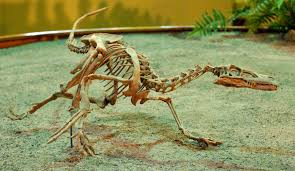 Some refer to the Velociraptor as being a bird, and this is correct to some extent. Many dromaeosaurids have birdlike features, and it is believed that the Velociraptor may have had feathers. Paleontologists believe that the Velociraptors had feathers as they had quill knobs on their bones just like the modern-day birds. They think that feathers could have been attached to these areas. Researchers have portrayed this dinosaur as having everything from colorless, pale, green plumage to chicken-like tufts worthy of a South American parrot. The movie depicts this animal as being lizard-skinned, but this isn’t the truth. Since most birds today have feathers even if they are unable to fly, more than likely the Velociraptors had feathers also.
Some refer to the Velociraptor as being a bird, and this is correct to some extent. Many dromaeosaurids have birdlike features, and it is believed that the Velociraptor may have had feathers. Paleontologists believe that the Velociraptors had feathers as they had quill knobs on their bones just like the modern-day birds. They think that feathers could have been attached to these areas. Researchers have portrayed this dinosaur as having everything from colorless, pale, green plumage to chicken-like tufts worthy of a South American parrot. The movie depicts this animal as being lizard-skinned, but this isn’t the truth. Since most birds today have feathers even if they are unable to fly, more than likely the Velociraptors had feathers also.
Velociraptors have tails that are contracted, and it was always held directly behind its body. This gave the creatures excellent balance and the ability to turn quickly. Deinonychus is related to the Velociraptor but is much larger in size. Cold-blooded animals do not excel at aggressively pursuing and violently attacking their prey. This fact alongside a possible coat of feathers leads paleontologists to believe that the Velociraptor was a warm-blooded creature and possessed warm-blooded metabolism similar to those of mammals and present-day birds. This has not yet been confirmed.
Many paleontologists also believe that the Velociraptor believe Velociraptors probably had the skill of climbing trees. Its sharp toe-claws support this fact. Paleontologist also believes that the ancestors of Velociraptors could probably fly as they had wings and feathers. It suggests that the Raptors could fly as well. Currently, we have seen birds that do not fly though they have feathers. This aspect can be taken into consideration, as well.
How Big were Velociraptors?
Many movies like Jurassic Park feature the Velociraptor much larger than it actually was. In reality, the Velociraptor was only 6 feet in length, 2 feet tall, and probably weighed no more than 45 pounds. It would take almost seven adult Velociraptors to match one average-sized dinosaur.
Morphological characteristics
Although it was not a large animal (it did not exceed 1.8 meters in height in the adult state), the Velociraptor was a fierce predator of about 15 kilograms in weight and a distinctive skull slightly curved upwards (25 cm long). His jaws contained about 26 pieces of sharp teeth on each side with a serrated shape that allowed him to increase his predatory abilities.
As we mentioned at the beginning, the Velociraptor was a biped animal, that is, it moved on its hind limbs. As for the maximum speed, these animals could reach up to 40 kilometers per hour, balanced in part thanks to the length of their tail, which also served them to execute fast turns and gear changes.
Did velociraptors have feathers?
Velociraptors also had a bone structure very similar to that found in current birds, as well as powerful feathers and claws. However, these animals could not fly, so it is assumed that the presence of feathers served to control body temperature and that of their eggs.
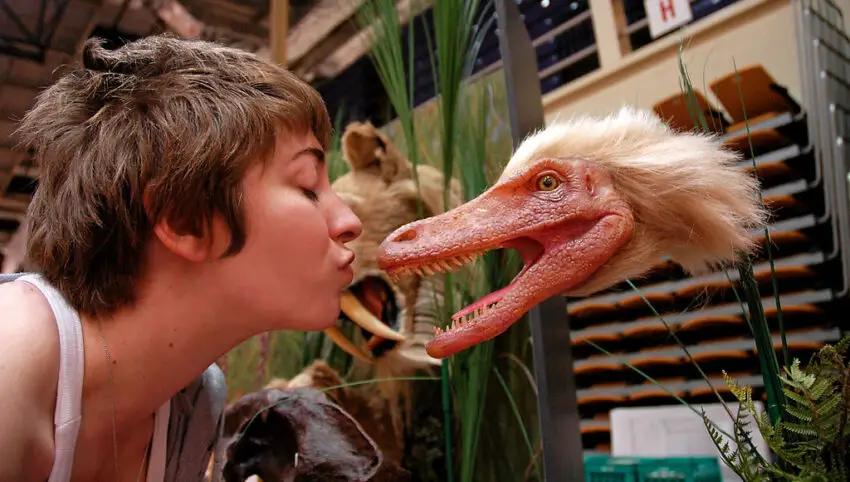
As for his intelligence, we must highlight that they had a large brain compared to the rest of the body, which added to what is known as a “terrible claw” (a claw 10 centimeters in length on its limbs and could kill it to its prey), made it a very effective predator.
Evolution of Velociraptor
The Velociraptor is one of the most fascinating dinosaurs that existed during the Late Cretaceous period. It is believed to have evolved around 75 million years ago in Mongolia, where the first fossils were discovered. Over time, Velociraptors evolved to become one of the most efficient predators of their time, with their unique physical characteristics and hunting techniques.
One of the key features that helped Velociraptors evolve into deadly predators was their size. At around six feet long and weighing up to 33 pounds, it was larger than most of its prey. It had sharp, serrated teeth and long, retractable claws on its feet that it used to grab and kill its prey. Velociraptors also had a unique, flexible wrists that allowed them to grip and hold onto prey while it used their teeth to deliver a fatal bite.
Velociraptor was also one of the most intelligent dinosaurs of its time. It had a large brain relative to its body size and was capable of complex social behaviors, such as hunting in packs. This allowed them to take down larger prey and also protected them from other predators.
Another fascinating aspect of the evolution of Velociraptors is their feathers. Recent discoveries have shown that Velociraptor was covered in feathers, much like modern birds. This is a new discovery, as previously it was thought that only smaller dinosaurs had feathers. This discovery has led scie
Other interesting facts
- In addition to its impressive speed (it barely weighed about 15 kilograms), the Velociraptor had a great mental capacity to decipher its prey and move through the ground without being detected.
- It existed on Earth about 80 million years ago.
- Although it has not been confirmed with accuracy, it is believed that Velociraptor possessed warm blood, partly due to its great resemblance to current birds.
- Some scientists claim that it was the most intelligent dinosaur that existed.
- Its reproduction was of sexual type (as it happens with vertebrates).
- He lived mostly in deserts and sand dunes of Central Asia.
- They were oviparous animals, and they built nests on the ground to lay eggs.
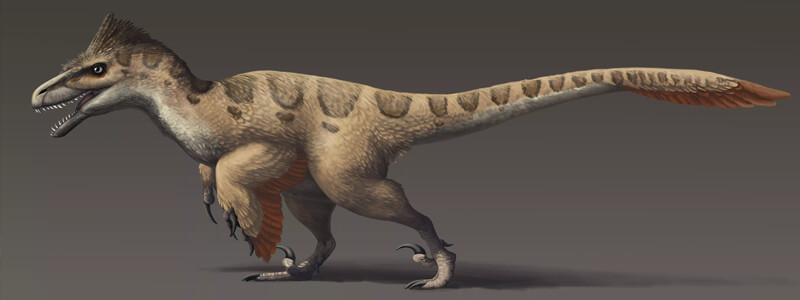
Raptor Dinosaur Types
Raptors, small to medium-sized feathered dinosaurs with single, long, curving hind claws on their hind feet, were among the Mesozoic Era’s most feared predators. Because of Jurassic Park, Velociraptor is by far the best-known raptor on the planet; most people would struggle to name two other examples if they even knew there were other “raptors”.
- Achillobator
- Adasaurus
- Atrociraptor
- Austroraptor
- Balaur
- Bambiraptor
- Buitreraptor
- Changyuraptor
- Cryptovolans
- Dakotaraptor
- Deinonychus
- Dromaeosauroides
- Dromaeosaurus
- Graciliraptor
- Linheraptor
- Luanchuanraptor
- Microraptor
- Neuquenraptor
- Nuthetes
- Pamparaptor
- Pyroraptor
- Rahonavis
- Saurornitholestes
- Shanag
- Sinornithosaurus
- Unenlagia
- Utahraptor
- Variraptor
- Velociraptor
- Zhenyuanlong
How Velociraptors hunted
Velociraptors were known for their hunting prowess and were among the most efficient predators of their time. These fierce dinosaurs had sharp teeth and curved claws that they used to take down their prey. They were also known for their agility and speed, which made them even more effective hunters.
Velociraptors were pack hunters and worked together to take down their prey. They would surround their target and attack from all sides, using their sharp claws to slash and tear at their prey. Once they had wounded their prey, they would move in for the kill with a bite to the throat or neck.
Contrary to popular belief, Velociraptors were not as large as they were portrayed in movies like Jurassic Park. They were only about the size of a turkey and weighed around 30 pounds. However, what they lacked in size, they made up for in speed, agility, and intelligence.
Velociraptors were also known for their intelligence and problem-solving abilities. They had a large brain relative to their body size, which allowed them to strategize during hunts. They were also capable of communicating with each other through vocalizations and body language.
Velociraptor social behavior
Velociraptor was a highly social animal. Paleontologists have uncovered several sites where multiple individuals of the species have been found together, suggesting that they may have hunted in packs. This is further supported by the discovery of a fossilized group of velociraptor individuals that appear to have died together, likely during a group hunt.
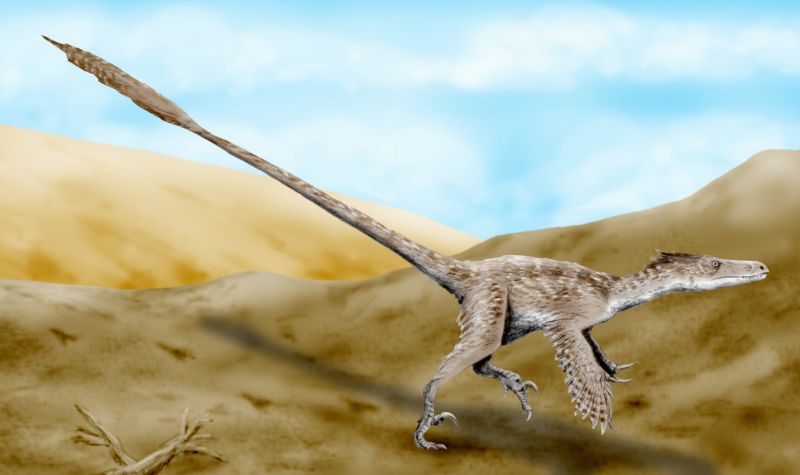
Interestingly, it’s also been suggested that velociraptors may have had a social hierarchy within their packs. This is based on evidence that shows some individuals were larger and more robust than others, indicating that they may have held a higher rank in the social structure.
In addition, some researchers have hypothesized that velociraptors may have cared for their young, based on the discovery of a fossilized nest of eggs that were believed to belong to the species. This suggests that they may have had a level of parental care and social structure similar to modern-day birds. Overall, the social behavior of velociraptors is a fascinating area of study that sheds light on the complex lives of these ancient creatures.
Discovery of the first velociraptor fossils
The discovery of the first velociraptor fossils is a fascinating story. In 1923, a paleontologist named Peter Kaisen discovered a fossilized claw in the Gobi Desert in Mongolia. At first, he believed it to be the foot of a prehistoric bird, but upon closer examination, he realized it was the sickle-shaped claw of a dinosaur.
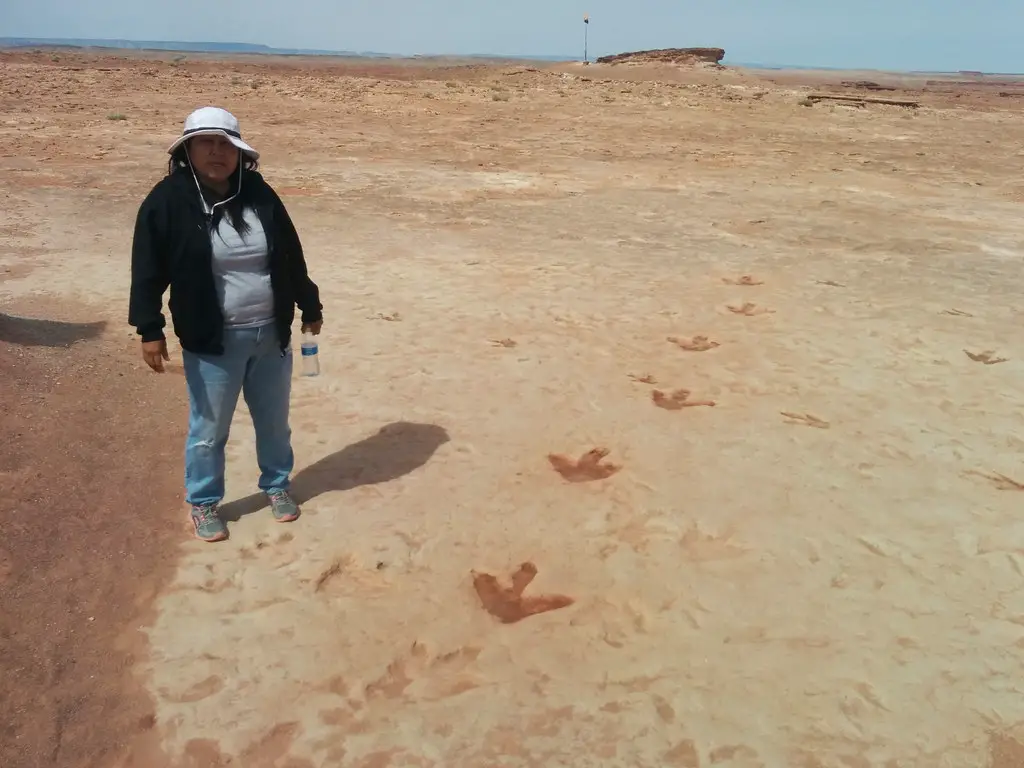
Nearly 70 years later, in 1990, paleontologist Dr. Senter and his team discovered the first complete velociraptor skeleton in Mongolia. This discovery helped scientists understand the anatomy and behavior of this fascinating creature.
Since then, several other velociraptor fossils have been found throughout Asia, helping to paint a more complete picture of this incredible dinosaur. In fact, some of the most well-known fossils have been found in the famous Velociraptor-rich region known as the Flaming Cliffs in Mongolia. These fossils have helped scientists learn more about the lifestyle, behavior, and evolution of this fascinating dinosaur.
Relationship between Velociraptor and modern birds
One of the most fascinating facts about Velociraptor is its relationship with modern birds. Scientists have long believed that birds evolved from dinosaurs, and the discovery of Velociraptor fossils has provided evidence to support this theory.
In fact, scientists have discovered that Velociraptor has many bird-like characteristics, including feathers, a wishbone, and a similar respiratory system. While Velociraptors were not capable of flight, they may have used their feathers for insulation, display, or even to help them run faster.
In addition, the discovery of a tiny bird-like dinosaur named Microraptor has shed further light on the relationship between dinosaurs and birds. Microraptor had wings on both their arms and legs, suggesting that they may have been capable of gliding or even flying.
Fictional Representations of Velociraptor
Velociraptor has been featured in various movies and TV shows, but these depictions are not always scientifically accurate. One of the most famous representations of Velociraptor is in the movie Jurassic Park, where it is depicted as a much larger and more ferocious dinosaur than it actually was. In reality, Velociraptor was only about the size of a chicken, and while it was certainly a formidable predator, it was not the towering monster that it is often portrayed as in popular culture.
Another common misconception is that Velociraptors had feathers, but this is not supported by the fossil record. While some of its close relatives, such as Microraptor, did have feathers, there is no direct evidence that Velociraptor did as well. Despite these inaccuracies, fictional representations of Velociraptors have helped to make this dinosaur one of the most well-known and beloved of all prehistoric animals.
